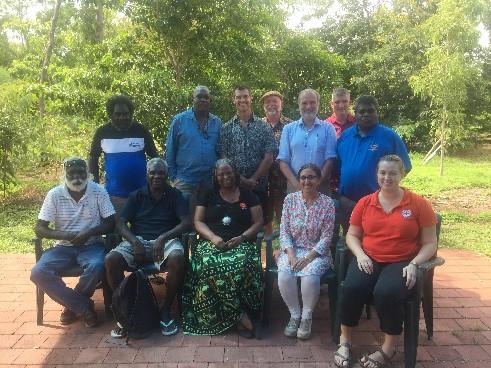
PUBLICATIONS
Published works

Savanna fire management and bushfire and natural hazard scenario planning for north Australia
| Title | Savanna fire management and bushfire and natural hazard scenario planning for north Australia |
| Publication Type | Report |
| Year of Publication | 2020 |
| Authors | Russell-Smith, J, Sangha, K, Edwards, AC |
| Document Number | 555 |
| Date Published | 03/2020 |
| Institution | Bushfire and Natural Hazards CRC |
| City | Melbourne |
| Report Number | 555 |
| Keywords | fire management, Savanna, scenario planning |
| Abstract | The ‘Scenario planning for remote community risk management in northern Australia’ project is part of CDU’s northern hub second round suite of projects, which commenced in July 2017. The hub involves collaborations between the Darwin Centre for Bushfire Research (DCBR) at Charles Darwin University (CDU), the North Australia Indigenous Land & Sea Management Alliance Ltd (NAILSMA), the Aboriginal Research Practitioners Network (ARPNet) also based at CDU, and regional stakeholders including north Australian Fire and Emergency Management agencies, Conservation Agencies and remote Indigenous communities. In this report, we provide summaries of the work undertaken to date in the two main components of the Northern hub’s scenario planning project. Firstly, we are developing a framework for the Fire & Emergency Services agencies to engage with remote Indigenous communities to potentially improve Emergency Services delivery. The agencies recognise the need to improve the services provided remotely, but also recognise that in part and in some jurisdictions (particularly the NT) not only are they not funded to achieve this, also that the classic model of volunteering does not suit remote Indigenous community members, who are too busy dealing with unemployment and poverty. However, the expanding Indigenous Ranger program is a potential means to more appropriately engage with local Indigenous people to build resilience and disaster assistance. The process has involved a suite of case studies where interviews have been undertaken with members of the, now, wide-spread Indigenous Ranger programs to ascertain the aspirations, willingness and capacity of the Indigenous Rangers to engage in EM activities. In this report, we provide summaries of the activities undertaken and information gathered to date at Hermannsberg in Central Australia, Broome in the Kimberley, Galiwinku on Elcho Island off Arnhem Land and Borroloola on the Gulf of Carpentaria. Secondly, we are continuing the program of service delivery of land management, monitoring and evaluation tools to assist fire managers in remote north Australia to develop “Improved Fire Management Regimes”, by providing information with respect to the spatial distribution, and effects of fires on tropical savanna and rangeland habitats through the Savanna Monitoring & Evaluation Reporting Framework (SMERF). In this report, we outline the further development of SMERF, in particular the proofing of the fire metrics collated in the previous year with a Far North Queensland Conservation estate case study in conjunction with partners at Queensland Parks & Wildlife. |
| Refereed Designation | Non-Refereed |
Published Works


